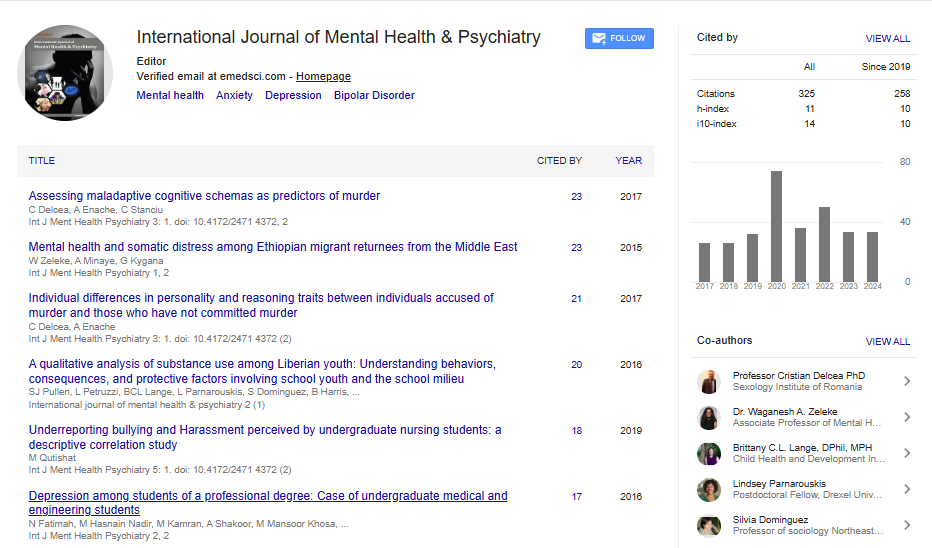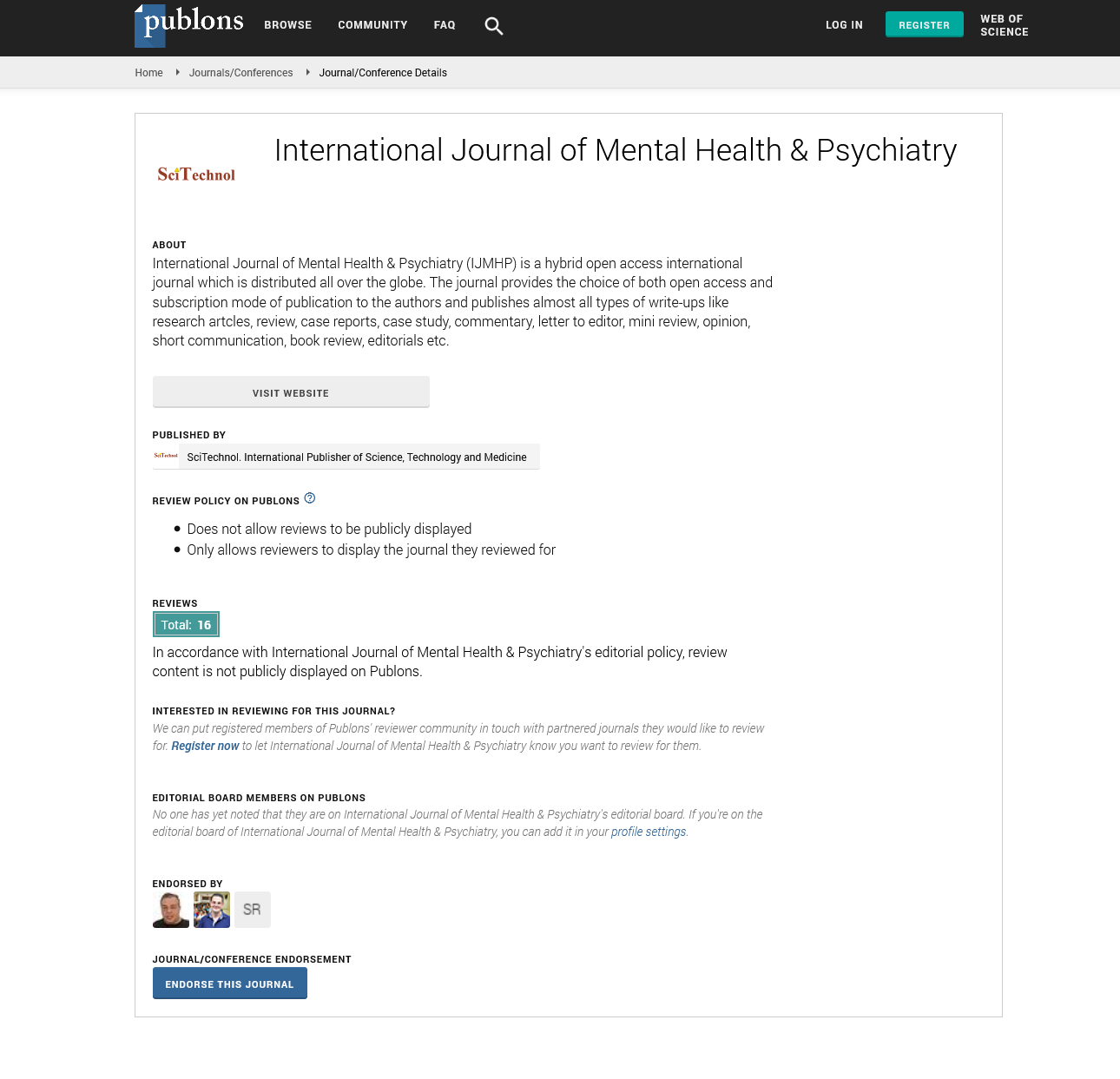What differentiates trauma related disorders: A retrospective cohort study utilising a large novel database to establish radiologically and morphometrically differences between functional neurological disorder and post-traumatic stress disorder
Emily Lowery
Kings College London, UK
: Int J Ment Health Psychiatry
Abstract
Functional neurological disorders (FND) are debilitating disorders of the nervous system, causing motor, sensory & cognitive impairments which are among the most common neurological disorders. Psychosocial adversities such as stressful life events, interpersonal difficulties, childhood maltreatment and psychological traumas are well-established risk factors for FND (1), yet a mechanistic gap remains in the integration of neurobiological and psychosocial models of the disorder (2-4). Previous Imaging studies in FND patients report changes in brain networks, however results are heterogeneous and fail to include both healthy controls and disease controls (5). A lack of research investigating the mechanistic differences between FND and trauma- related disorders such as post-traumatic stress disorder remains. This project utilised a novel real-world database containing clinical structural Magnetic Resonance Images (MRI) on 12,548 patients referred to the UK’s largest mental health trust between January 2008-2022. 58 FND and 53 PTSD patients were obtained with full reports. Analysis of artificial intelligence (AI) extracted data from the radiology reports of patients was done using Chi-squared analysis. A whole brain analysis was conducted for volumetric differences at a group level between patients’ groups and healthy controls. Results: There were no significant differences in the radiology report extractions reports between FND and PTSD patients. There was a significantly increased volume in the bilateral cerebellum white matter of FND patients compared to both PTSD and healthy controls (MD= 1368.311, p<0.001) (MD= 1128.794, p<0.001). They also had significantly increased volume of the right thalamus compared to healthy controls (MD=262.529, p=0.014), but not compared to PTSD patients. Conclusion: Radiology report extractions are not indicative of a clinical FND or PTSD diagnosis. Morphometric differences in the cerebellum white matter need more robust investigation, including the role of confounders such as anxiety and depression to establish whether cerebellum white matter could be a marker for differentiating trauma-related disorders.
 Spanish
Spanish  Chinese
Chinese  Russian
Russian  German
German  French
French  Japanese
Japanese  Portuguese
Portuguese  Hindi
Hindi 
